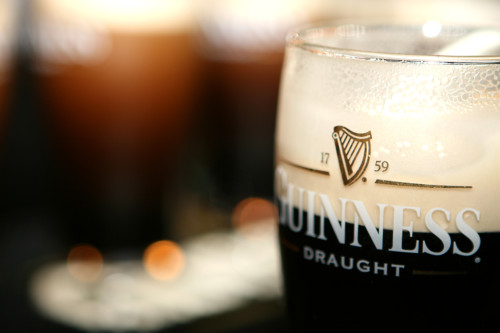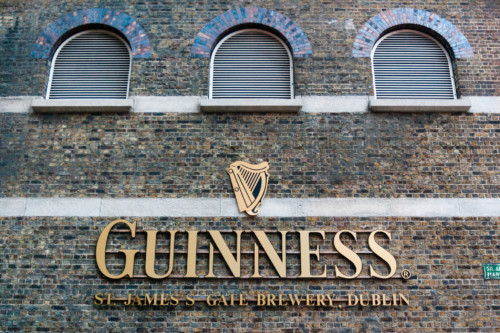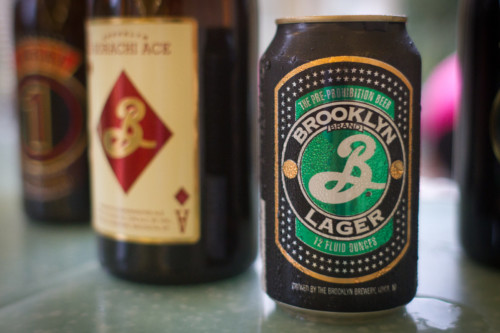To Understand St. Patrick’s Day, One Must First Understand Irish Brewing
Our highly confused winter is slowly coming to an end. This means, among other things, that it is time for yet another Saint Patrick’s Day. Now, I’m sure that many of you are dreading a day that is known more for excessive drinking then a deep examination of Irish culture or ruminations on the life of the titular Saint. You may also have noted that this year March 17th is a Friday, something which can only increase the amount of debauchery we should expect. But, hidden in this orgiastic display of hedonism is an important kernel of Irish history and culture. Because, for many the drink of choice will be beer, and beer has deep roots in Ireland.
As in the rest of Northern Europe, beer has been the drink of choice in Ireland for thousands of years. There is evidence of brewing going back almost 5000 years. It would reign uncontested until about 1200 CE, when monks learned how to distill barley into more potent whiskey. But, beer continued to be consumed, produced in small batches by monks, as well as by a skilled professional class of women known as alewives. Because medieval beer very little hops it spoiled easily, therefore constant production was necessary. This made brewing a stable, if not lucrative always business, and many women used it to supplement their husband’s income, or provide for themselves if widowed.
Although the specifics of the beer making changed over the centuries, the general scheme remained the same. The introduction of hops in the 14th century helped preserve beer for longer, and changed the taste to closer to modern beer. But, like the other cottage industries of Europe brewing was soon no match for the relentless efficiency of the industrial revolution. Industrialization made large scale beer production possible, while also enabling a new level of quality control. Amid this upheaval a man named Arthur Guinness purchased a 9,000-year lease on an abandoned brewery.
Initially, Guinness made multiple types of beer, but by 1800 he had settled into making a single style- the dark, rich ale dubbed “porter”. Soon, however, Guinness would pioneer a new style. The story goes that because of a tax on malted barley, Irish brewers started to use large quantities of roasted but unmalted barley. This helped to create the distinctive (and delicious) taste of the style that became known as Dry Stout, or Irish Dry Stout. (This story is possibly apocryphal, as recent research seems to suggest that unmalted barley was common in whiskey even before the various English taxes, so it is possible this was the same with beer.)
As in the United States, the 20th century was a time of consolidation for Irish breweries. While Guinness grew into one of the largest breweries in the world, the total number of Irish breweries plummeted. From around 100 in 1895, by 1960 there were just eight breweries left in the whole country. The global wave of craft beer finally seems to be reversing that trend. As of 2016, there are 68 craft breweries in Ireland, and while their market share remains tiny (< 2.0%), it is growing. Today, while stout is losing ground to light lagers, together they still account for almost 90% of beer sold.
Beer, of course, remains popular in Ireland. Per capita, Ireland ranks 7th in beer consumption in the world (for reference, the US is 17th and the Czech Republic is a surprising first place). With that in mind, here are some popular Irish brewing styles, and the exemplars that embody them. (I’ve also included some local New York based alternatives, because it’s always the right time to buy local.)
Light Lager
Lager is in many ways the beer of the 20th century. It dominates sales all over the world, it is no different in Ireland, where lager accounts for about half of the beer sold. Lager gained popularity in Ireland after WWII, but the widest spread domestic lager Harp was created in 1960. Obviously, the US is awash in similar lagers, and Harp is exported. But, for my money one of the best is produced by one of the oldest breweries in NYC– Brooklyn Lager from the brewery of the same name. It’s both widespread, and at least on the East Coast often a good deal.
Irish Red Ale
Ale only accounts for about 10% of beer sold in Ireland, the majority, and certainly the most distinctive is red ale. The name, obviously, refers to the distinctive reddish amber color of the beer. Smithwicks is actually the oldest brewery in Ireland (although it is now owned by Diageo). For those looking for a slightly more intense red ale, Six Point Brewing in Brooklyn makes an “imperial red ale” named Global Warmer. It has a similar malty flavor and color, with a more intense hop kick.
Irish Dry Stout
This style is synonymous with one beer: Guinness– by far the most famous Irish beer, and one of the most famous beers in the world. For many who like dark beer, Guinness is no doubt their “gateway stout”. It is both common and delicious, and truly available worldwide. I myself have drunk it on four continents. But, for the next step on your stout journey try an American beer: Left Hand Brewing Milk Stout. An import from Colorado, the milk stout is a little sweeter, while still maintaining a full bodied and dark character.






































